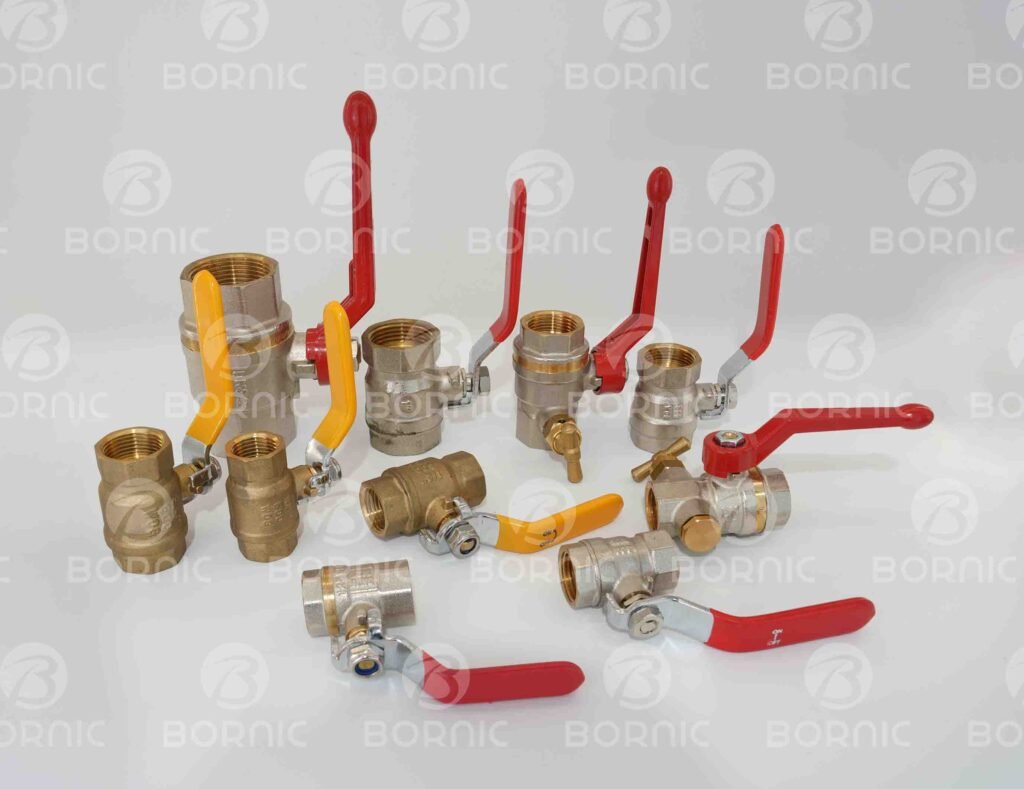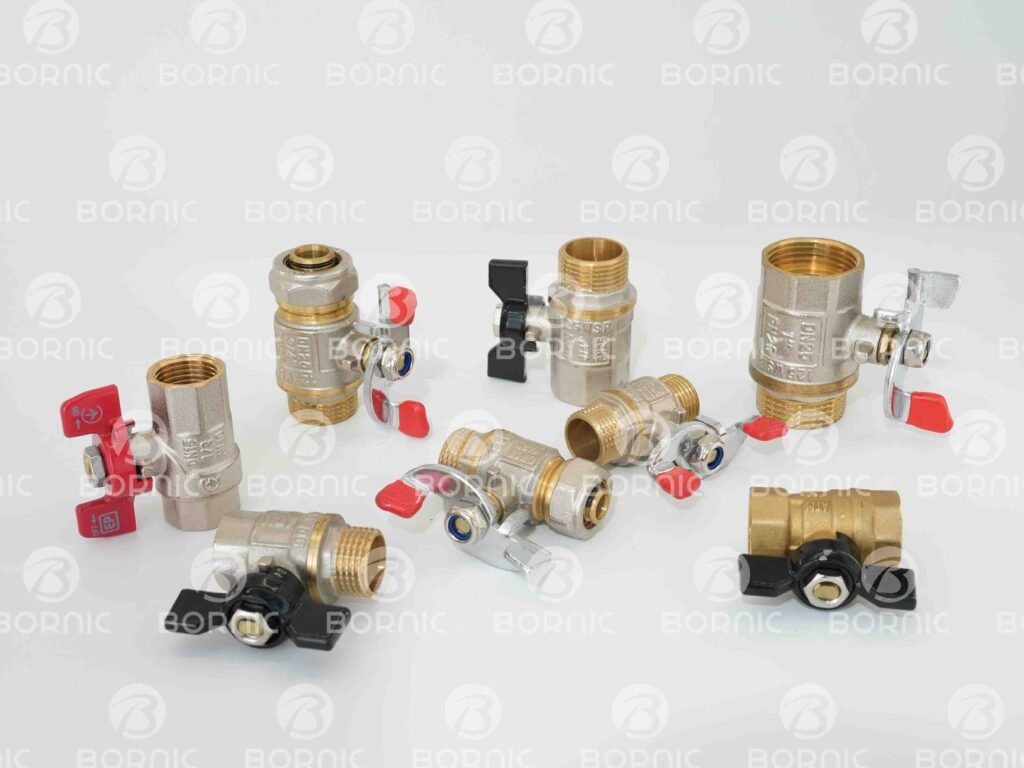Valves are essential components in various industrial systems, providing control over the flow of gases and liquids. Understanding the terminology associated with valves is crucial for professionals in the field. Below is an overview of 100 professional terms related to valves, covering their types, classifications, dimensions, performance, and specific features.
Types and Classifications
- Valve: A mechanical device used to control the flow of media within a pipeline.
- Gate Valve: Operated by a flat gate that moves up and down to open or close the flow path.
- Globe Valve: Utilizes a movable disk-type element and a stationary ring seat in a generally spherical body.
- Throttle Valve: Regulates the flow or pressure by varying the size of the flow passage.
- Ball Valve: Uses a spherical disc to control flow, offering quick shutoff.
- Butterfly Valve: A quarter-turn valve with a rotating disk to regulate flow.
- Diaphragm Valve: Uses a diaphragm to separate the flow medium from the moving parts.
- Plug Valve: Features a cylindrical or conically tapered plug to regulate flow.
- Check Valve: Automatically prevents backflow by allowing fluid to flow in only one direction.
- Safety Valve: Automatically releases pressure when it exceeds a preset level to protect equipment.
- Pressure Reducing Valve: Maintains a lower, constant output pressure regardless of input pressure fluctuations.
- Steam Trap: Automatically discharges condensate while preventing steam loss.
- Blowdown Valve: Used to remove sludge and sediment from boilers and other pressure vessels.
- Low-Pressure Valve: Designed for nominal pressure ratings of PN≤1.6MPa.
- Medium-Pressure Valve: Handles pressures from PN≥2.0 to less than PN10.0MPa.
- High-Pressure Valve: Suitable for nominal pressures of PN≥10.0MPa.
- Ultra-High Pressure Valve: Operates at pressures of PN≥100.0MPa.
- High-Temperature Valve: Used in environments with temperatures above 450℃.
- Low-Temperature Valve: Designed for media temperatures ranging from -40℃ to -100℃.
- Cryogenic Valve: Suitable for extremely low temperatures below -100℃.
- Model Number: Assigned based on type, drive method, connection form, structural features, seat material, and nominal pressure.
- Connection Size: Refers to the dimensions where the valve connects to the pipeline.
- Overall Dimensions: The various methods of connecting valves to pipelines or equipment (e.g., flanged, threaded, welded).
- Seal Test: Evaluates the performance of sealing components against leaks.
- Stem Seal Test: Tests the seal between the valve stem and bonnet.
- Seal Test Pressure: The specified pressure for conducting a seal test.
- Service Media: Types of media that the valve can handle (e.g., oil, water, gas).
- Service Temperature: The range of temperatures at which the valve can operate.
Structural and Functional Elements
- Sealing Surface: Contact surfaces between the closure member and valve seat that prevent leaks.
- Closure Member: The component that moves to open or close the valve (e.g., gate in gate valve, disc in globe valve).
- Packing: Material placed in the stuffing box to prevent leakage along the stem.
- Packing Gland: Component that compresses the packing material to ensure a seal.
- Yoke: Supports the stem nut and actuation mechanism.
- Connection Slot Size: Structural dimensions where the closure member and stem connect.
- Flow Area: The smallest cross-sectional area in the valve path affecting the flow capacity.
- Operation Speed: Time required for the valve to complete an opening or closing cycle.
- Operating Force/Torque: The force or torque needed to operate the valve.
- Structural Strength: The valve’s ability to withstand internal pressures.
- Sealing Performance: The valve’s ability to prevent leaks from its sealing surfaces.
- Flow Resistance: The pressure drop caused by the valve when the medium flows through it.
- Flow Characteristics: Relationship between the valve’s inlet pressure and the flow rate.
- Flow Characteristic Deviation: Variations in outlet pressure due to changes in flow rate at a constant inlet pressure.
- General Valve: Commonly used in industrial pipelines.
- Automatic Valve: Operates using the energy from the flowing media.
- Driven Valve: Operated manually or by electric, hydraulic, or pneumatic actuators.
Specialized Components and Features
- Impact Handwheel: A handwheel designed to reduce operation effort by utilizing impact forces.
- Gear Transmission Device: Uses gears for valve actuation.
- Pneumatic Device: Uses air pressure to open or close the valve.
- Hydraulic Device: Uses fluid pressure for valve actuation.
- Sensitivity and Reliability: The valve’s response to changes in media parameters.
- Service Life: The duration or number of cycles a valve can operate effectively.
- Condensate Discharge Capacity: The maximum amount of condensate a steam trap can discharge under specific conditions.
Valve Definitions and Forms
- Straight-Through Valve Structure: Valves with aligned inlet and outlet.
- Angle Valve Structure: Valves with inlet and outlet positioned at 90 degrees.
- Straight Flow Valve Structure: Valves with a linear flow path and angled stem.
- Three-Way Valve: Valves with three ports for flow direction control.
- T-Type Three-Way Valve: Three-way valve with a T-shaped flow path.
- L-Type Three-Way Valve: Three-way valve with an L-shaped flow path.
By familiarizing yourself with these 100 professional terms, you can effectively navigate the complex world of valves, ensuring proper selection, operation, and maintenance in various industrial applications.






